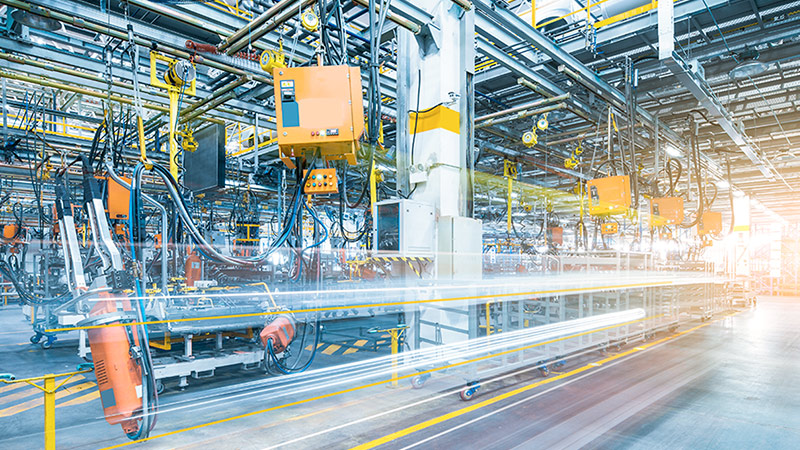Industry 4.0 is the next industrial revolution—one where the best of traditional manufacturing and industrial practices mix with smart technology—and today we are living out that revolution in the midst of COVID-19. Global remote working and an aging workforce highlight the current need for a transformation in manufacturing, one where the right infrastructure connects IT and operations and maximizes employee productivity. Hannover Messe, the “home of industrial pioneers”, held its annual international industry event this year in a virtual format. Cisco’s Global Industry Lead for Manufacturing Carlos Rojas held a session about smart manufacturing and how the company improves problem-solving and minimizes outages with Cisco’s approach to manufacturing.
“Our Workforce Enablement solutions center around the human aspect of industrial transformation,” says Rojas, “One of the things we did is we interviewed our customers working from home during the crisis, and we realized their teams were working in new ways. With the dispersion of their support staff, factory workers were left alone to operate on their own, and therefore relying on people outside of their factory environments. Remote experts are needed and remote operations are absolutely critical these days.”
See also: CHILL leads the way to Industry 4.0
The global pandemic and a changing workforce call for innovative technology to create a seamless transition—one where work doesn’t stop and productivity can thrive.
Workforce enablement with remote experts and collaboration
Rojas cites that 40 percent of the “Industrial Workforce” will be eligible for retirement within the next ten years, which makes it essential that they transfer their knowledge to a new generation. In addition, 75 percent of millennials will be in the workforce by 2030. Crucial knowledge transfer between these two workforces and the ongoing trend of remote working makes remote expertise the key to bridging that skills gap. Cisco combines their collaboration technology with a unified wireless network architecture so that experts can be connected to people on the manufacturing floor—in real-time, securely, and over hi-definition video. The expert can see, hear, and experience all that is going on for the employee they’re helping. This results in less downtime, higher productivity, and a faster time to market.
A McKinsey survey also finds that there is a 20 percent personal productivity increase when employees are connected and provided the right business applications.
A robust network is necessary for transformation & advanced manufacturing
Located in Portland, Oregon, Daimler Trucks North America (DTNA) needed a network environment transformation that could support their current and future manufacturing processes. As the producer for truck brands like Freightliner, Western Star, and Detroit, DTNA didn’t have any room for network downtimes—the number of different trucks offered and the specific requirements of a particular truck build meant each second of downtime costed them money.
DTNA partnered with Cisco and Rockwell Automation to optimize manufacturing and engineering in a secure and simple way. With Cisco’s wireless connectivity and a shared network outfitted within the shop floor, DTNA is now able to check statuses in real-time, truck build packages can be developed and updated electronically, and employees can securely connect from wherever they are. By combining IT and network environments, Cisco was able to provide the visibility into the manufacturing so DTNA managers can understand what’s going on and make the appropriate decisions. Improved network security also provides the proper firewalls and intrusion prevention software that stops all viruses and malicious software that may try to make its way in.
A foundation of security
As we see with DTNA, secure networking is an essential part of Industry 4.0. Now more than ever, dispersed teams need to maintain that critical visibility into operations in a secure way. In “The cost of cybercrime”, Accenture reports that the average annual cost of cybercrime per company in the automotive industry is $16 million, which is up 48 percent since 2017.
See also: How Cisco's SecureX revolutionizes security data
One of the main reasons manufacturing faces cybercrime attacks is the enhanced automation on plant floors, where IoT devices are spread throughout the production chain, leaving a larger surface for criminals to find their way in. Cisco’s Cyber Vision is a solution that lets manufacturers continue to use their IoT technologies in a safe way, while capturing the benefits of their digitization efforts. It lets the right people in and keeps the wrong people out.
Devices can be so widely distributed within manufacturing floors, and often they can get lost in the noise. Cyber Vision provides the visibility into the industrial control system, letting you know how, when, where, and why users and devices are connected to the network. It can help you understand all of the devices, the traffic that flows through them, and anything the device might be communicating with. This “vision” gives organizations the ability to take corrective actions, segment networks, and build security policies.
Learn more about what Cisco’s doing with smart manufacturing here.
###
We welcome the re-use, republication, and distribution of "The Network" content. Please credit us with the following information: Used with the permission of http://thenetwork.cisco.com/.




